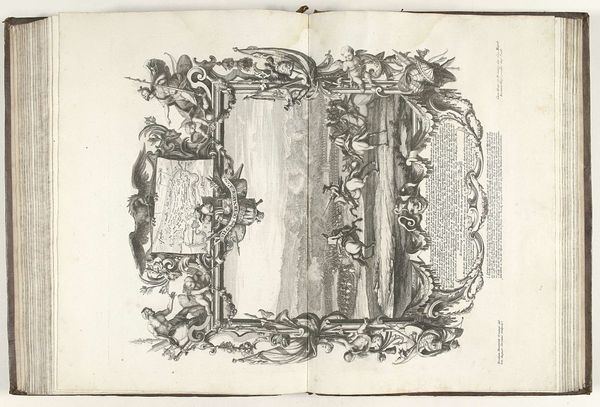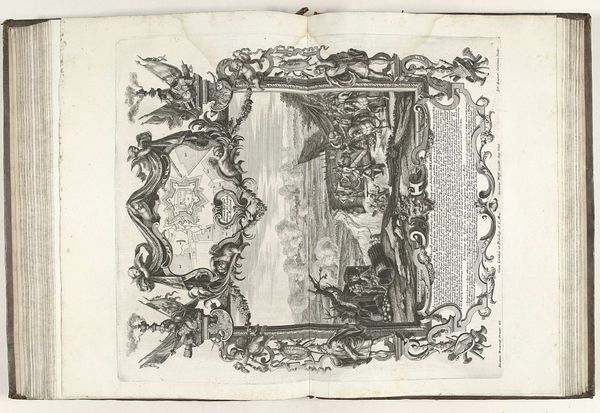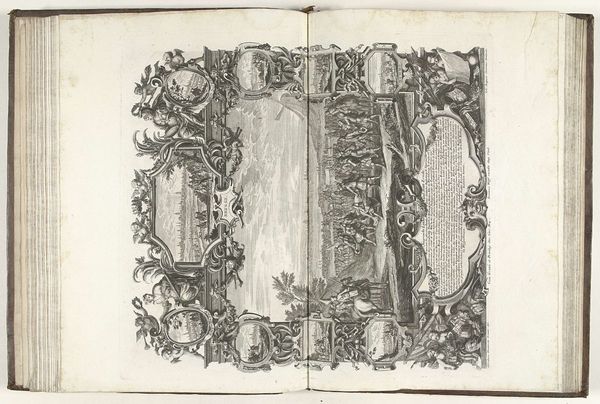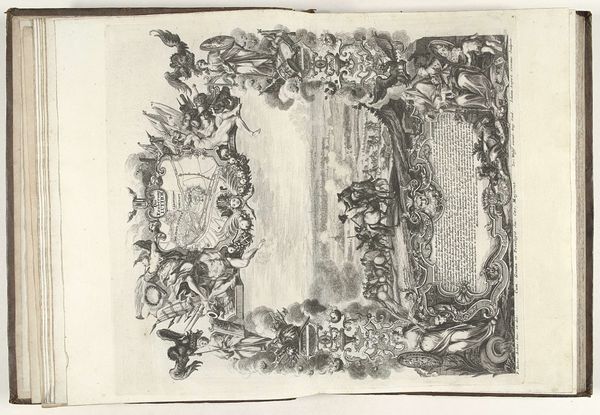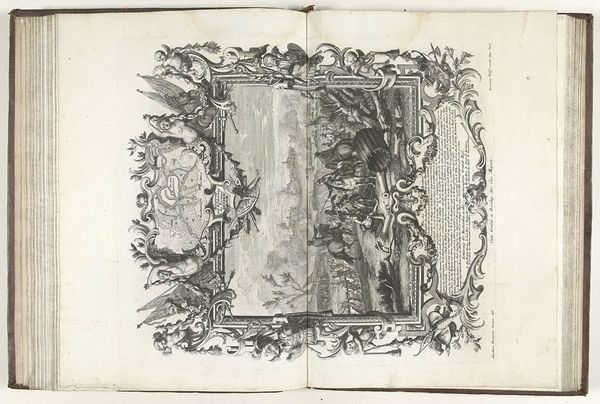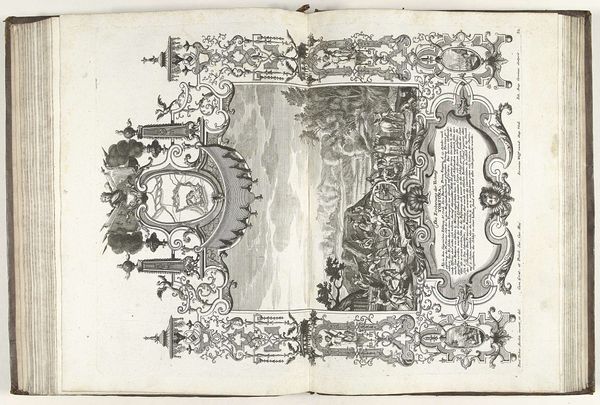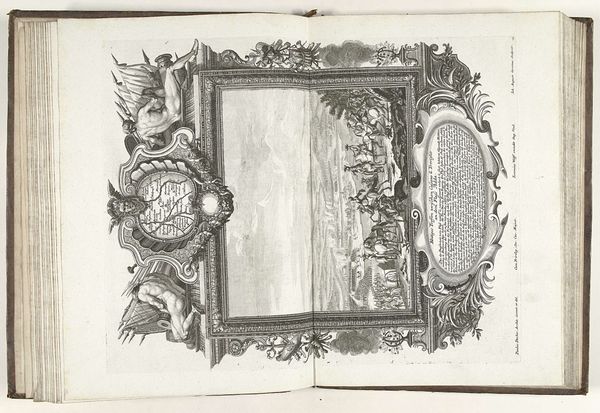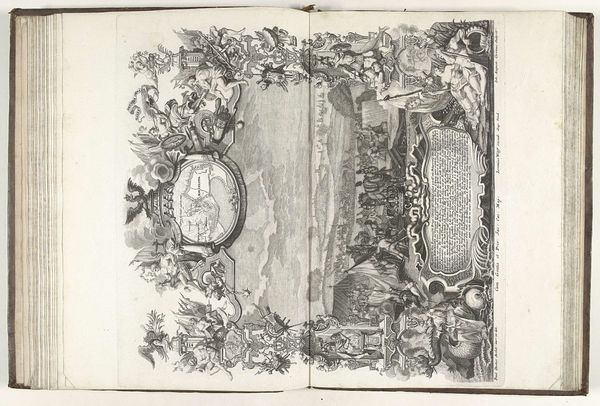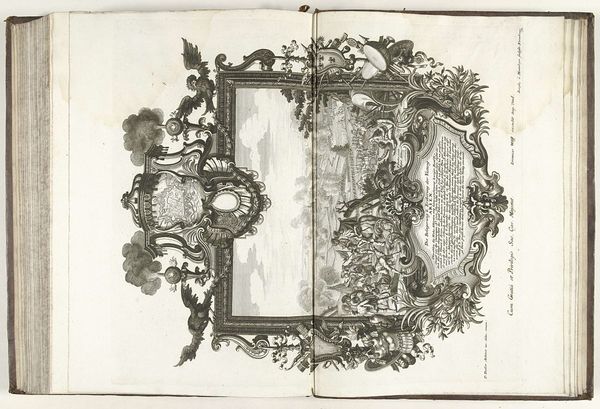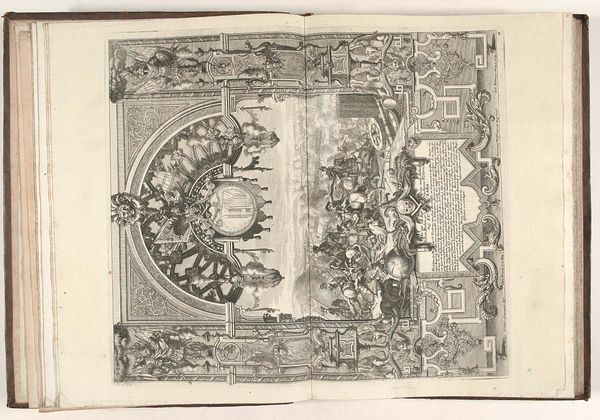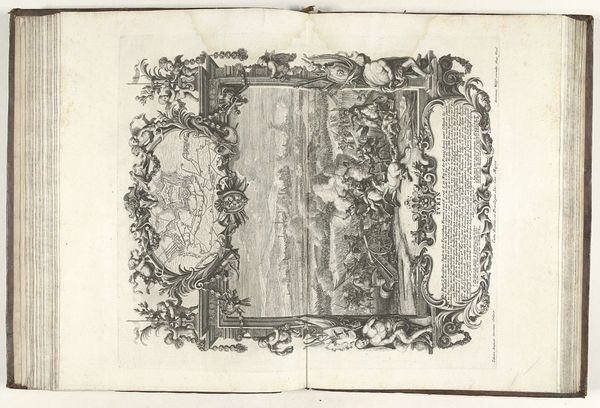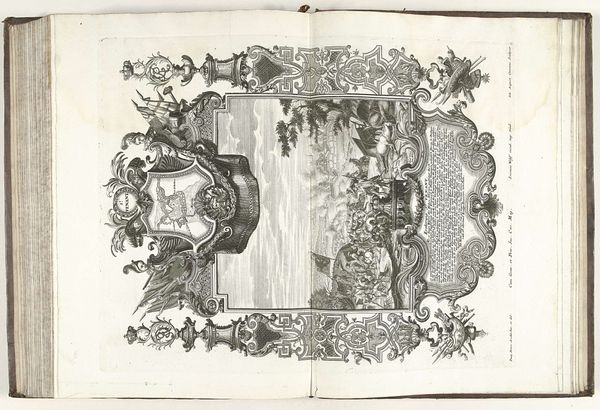
print, etching, engraving
#
baroque
#
pen drawing
# print
#
pen illustration
#
pen sketch
#
etching
#
old engraving style
#
landscape
#
history-painting
#
engraving
Dimensions: height 468 mm, width 375 mm
Copyright: Rijks Museum: Open Domain
Martin Engelbrecht etched "Inname van Béthune, 1710," depicting the siege of Béthune within an elaborate ornamental frame. Note the eagles and putti surrounding the central scene, symbols of power and divine favor, commonly used to glorify military victories. The eagle, often associated with Jupiter and imperial Rome, transcends cultures, appearing in heraldry and national emblems as a symbol of authority. The putti, or cherubic figures, are reminiscent of classical antiquity, often seen in Roman art, representing innocence and divine blessing. These motifs are not static; their meanings evolve. In medieval times, the eagle became a symbol of St. John the Evangelist, while putti, once pagan symbols, were Christianized to represent angelic beings. This visual language is a potent force, engaging viewers on a subconscious level, and evoking a sense of historical continuity. The non-linear progression of symbols like eagles and putti reveals their remarkable ability to resurface, adapt, and acquire new meanings across different eras.
Comments
No comments
Be the first to comment and join the conversation on the ultimate creative platform.
